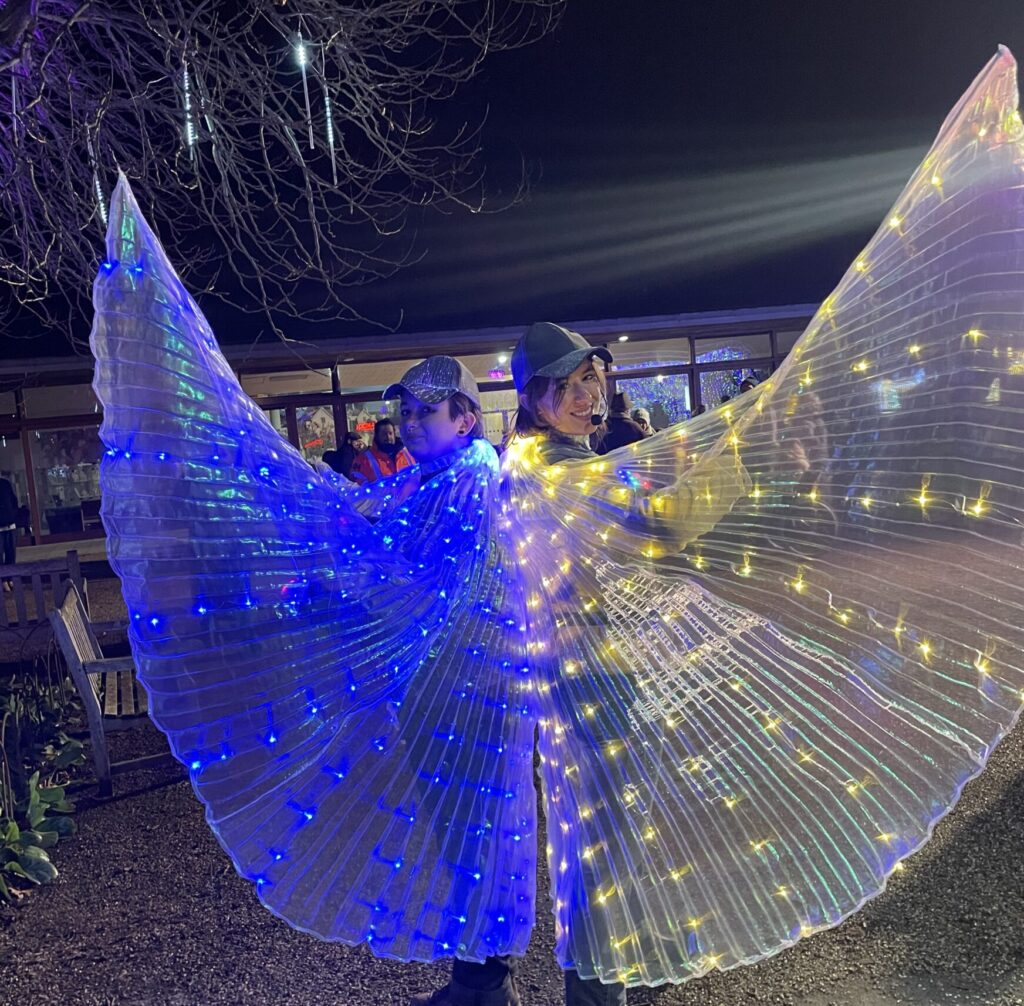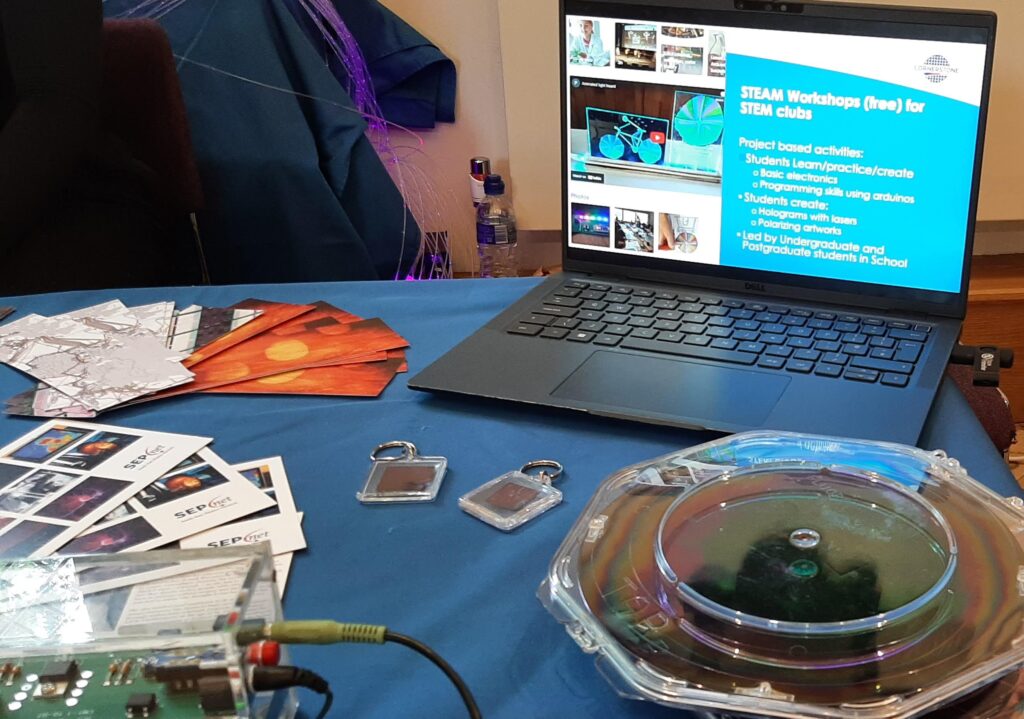From Research to Outreach – How C-PIC Builds Public Understanding of Photonics

Silicon photonics (SiPh) holds transformative potential across a wide range of industries – from telecommunications and healthcare to quantum computing and environmental sensing. However, realising this potential requires more than technical excellence – it demands public understanding that drives investment, policy support, and crucially, the talent pipeline needed to fuel a thriving ecosystem of SiPh-enabled companies.
The CORNERSTONE Photonics Innovation Centre (C-PIC) aims to accelerate the development of SiPh from cutting-edge research to commercial applications, capable of impacting both existing and new markets. This vision depends on building public awareness of photonics’ importance as well as inspiring the next generation to pursue STEM careers. Against this backdrop, C-PIC deploys a comprehensive public engagement strategy that transforms complex research into accessible, inspiring experiences for diverse audiences.
Through creative partnerships with arts festivals, systematic school programmes, and a culture that embeds engagement across all staff levels, C-PIC actively builds the public understanding and talent pipeline essential for SiPh’s continued growth.
Creative Community Partnerships
C-PIC’s approach to public engagement and outreach extends far beyond traditional academic approaches. By partnering with arts organisations and cultural events, the centre has discovered powerful ways to make photonics research accessible to audiences who might never encounter it otherwise. These creative collaborations show that the science of light resonates naturally with arts communities, opening up unexpected opportunities for meaningful engagement.
The partnership with Light Up Trails exemplifies this approach. Over the three festival dates in late 2024, C-PIC’s team of researchers engaged approximately 1,400 visitors through face-to-face interactions at the award-winning light festival at Sir Harold Hillier Gardens. C-PIC’s partnership was acknowledged by the festival organisers as a key factor in their victory at the Beautiful South Tourism Awards, where they won Gold in the Tourism Event/Festival category.
Demonstrators found themselves dispelling fundamental misconceptions about how modern technology works. One visitor remarked, “I thought the internet was kind of just in the air,” after learning about the physical infrastructure behind digital communications.
This success lies in creative presentation. C-PIC’s “Photonics Fairy” costumes — with LED wings, colour-shifting gloves and glowing name badges — helped spark conversations about light science with families. For the attendees, what started as curiosity about the costume evolved into hands-on demonstrations with fibre optics and diffraction gratings, supported by discussions about how photonics works. Visitors of all ages frequently expressed amazement at learning how their daily technology actually functions, with many admitting they had never considered the physical infrastructure behind digital communications.
This creative approach extends to academic settings as well. At the University of Southampton’s Arts and Humanities Festival, Research Technician Emily Crawshaw demonstrated how photonics research can find audiences in unexpected places. Working alongside PhD students from the Optics and Photonics Society, Emily engaged families with silicon wafer demonstrations, making complex fabrication processes accessible to visitors ranging from young children to adults with scientific backgrounds.
“Taking part in the Arts and Humanities Festival was such a rewarding experience! I loved seeing how engaged people were as they explored the field of silicon photonics,” Emily reflected. “It’s always inspiring to share what we do and see how enthusiastic people are about this field.”
These partnerships demonstrate more than public outreach – they represent professional development opportunities that strengthen C-PIC’s broader mission. Staff, researchers, and students alike develop communication skills that prove valuable when working with industry clients who are unfamiliar with SiPh.
Building Tomorrow’s Talent Through School Engagement
Building the talent pipeline for silicon photonics requires systematic engagement with young people at critical decision points in their education, and C-PIC has developed a comprehensive approach to school engagement that aims to go beyond one-off demonstrations.
In partnership with Into University and the University of Southampton’s Widening Participation team, C-PIC provided lantern-making workshops for Year 8 students from Oasis Academy Lord’s Hill School. The sessions combined demonstrations, practical activities and fundamental photonics concepts, introducing students to reflection, refraction, total internal reflection (TIR), and polarisation through engaging, curriculum-aligned experiences.
The results speak for themselves. Post-workshop evaluation revealed that 55% of students had never heard of photonics before the session, yet 82% could accurately define photonics as relating to the science or technology of light by the end. Perhaps more importantly, 81% of participants rated their enjoyment at 4 out of 5 stars or higher, with 36% expressing interest in learning more about photonics following the workshop!
By aligning activities with Key Stage 3 Science requirements and providing hands-on experiences that make abstract concepts tangible, C-PIC creates educational value that extends far beyond the workshop itself, with students gaining a practical understanding of the physics principles that underpin modern communications and sensing technologies.
Strategic Vision and Future Impact
C-PIC’s next phase of public engagement and outreach efforts are underpinned by a comprehensive five-year strategy and dedicated budget of £90k. The programme targets an ambitious reach of approximately 270,000 people through face-to-face and online audiences, aiming to increase public understanding of photonics generally by 55% and awareness of CORNERSTONE research specifically by 70% against the benchmark of previous outreach projects.
The strategy encompasses four distinct audience groups, each addressed through tailored approaches:
- University staff and students will have the opportunity to co-create training programmes and events that embed public engagement as a core skill.
- School students and teachers will benefit from partnerships with key educational institutions, delivering repeat intervention programmes across two colleges, two secondary schools, two primary schools, and one special educational needs school.
- Community organisers and leaders in Southampton will help influence young people through their wider circles, ensuring programmes reach underrepresented groups in photonics.
- Industry partners and creatives, who can collaborate with C-PIC to develop insightful public engagement activities that bridge research and real-world applications.
One of the programme’s most innovative elements is a teacher training initiative that provides free Photonics Explorer Kits to 15 teachers each year. Designed for long-term use, each kit supports three years of teaching with up to 45 pupils and is supported by online educational resources and video materials for seamless classroom integration.
Central to C-PIC’s forward-looking approach is rigorous evaluation and continuous improvement. By establishing clear metrics for success and systematically measuring outcomes across all activities, C-PIC aims to ensure that its engagement efforts become more effective over time. This systematic approach positions C-PIC as a catalyst for broader cultural change around photonics understanding.
Conclusion
C-PIC’s comprehensive public engagement and outreach strategy shows how strategic community partnerships can transform complex research into accessible, inspiring experiences. These initiatives, from award-winning festival collaborations involving 1,400 families to school programs boosting photonics awareness, demonstrate how innovative engagement can create measurable impact while improving community understanding and professional development.
Looking ahead, C-PIC’s five-year strategy to target 270,000 people reflects the centre’s understanding that SiPh’s commercial success depends on building public awareness, inspiring diverse talent, and demonstrating societal value. Through creative thinking, sustained partnerships and rigorous evaluation, C-PIC is actively constructing the cultural foundation that SiPh requires to flourish.


